|
Books Should Be Free Loyal Books Free Public Domain Audiobooks & eBook Downloads |
|
|
Books Should Be Free Loyal Books Free Public Domain Audiobooks & eBook Downloads |
|
Biographies |
|---|
|
Book type:
Sort by:
View by:
|
By: Mary Harris Jones (1830 or 1837-1930) | |
|---|---|
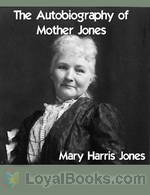 The Autobiography of Mother Jones
The Autobiography of Mother Jones
Mother Jones (Mary Harris Jones) was a legendary labor organizer. She was a founding member of the International Workers of the World (the IWW, or the Wobblies), and was active in the United Mine Workers and the Socialist Party of America. | |
By: Mary Huestis Pengilly | |
|---|---|
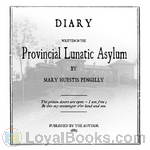 Diary Written in the Provincial Lunatic Asylum
Diary Written in the Provincial Lunatic Asylum
Mary Pengilly was taken to a Lunatic Asylum by her sons where she kept a diary, which this book is taken from. Mary records the harsh conditions and treatments received at the hands of the nurses during her stay. Once Mary is released she takes it upon herself to make the authorities aware of the situation at the Provincial Lunatic Asylum. | |
By: Mary Rhodes Waring Henagan | |
|---|---|
 Two Diaries From Middle St. John's, Berkeley, South Carolina, February - May, 1865
Two Diaries From Middle St. John's, Berkeley, South Carolina, February - May, 1865
Two diaries from Middle St. John’s, Berkeley, South Carolina, February – May, 1865. Journals kept by Miss Susan R. Jervey and Miss Charlotte St. Julien Ravenel, at Northampton and Poooshee Plantations, and reminiscences of Mrs. Henagan. With two contemporary reports from Federal officials. Published by the St. John’s Hunting Club, Middle St. Johns, Berkeley, South Carolina, 1921. - Summary by Book title and david wales | |
By: Mary Rosetta Parkman (1875-1941) | |
|---|---|
 Heroines of Service
Heroines of Service
From time immemorial, women have served as wives, mothers and domestic organizers. But in the nineteenth century, the lives of women were changing, allowing those with drive to serve in other capacities. In this volume, we briefly examine the lives of eleven such women, ranging from 'Our Lady of the Red Cross', Clara Barton to 'A Champion of the Cause', Anna Howard Shaw and 'The White Mother of Darkest Africa', Mary Slessor. - Summary by Lynne Thompson | |
By: Mary Rowlandson (c.1637-1711) | |
|---|---|
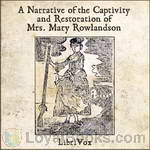 A Narrative of the Captivity and Restoration of Mrs. Mary Rowlandson
A Narrative of the Captivity and Restoration of Mrs. Mary Rowlandson
This is the story of Mary Rowlandson’s capture by American Indians in 1675. It is a blunt, frightening, and detailed work with several moments of off-color humor. Mary, the wife of a minister, was captured by Natives during King Philips War while living in a Lancaster town, most of which was decimated, and the people murdered. See through her eyes, which depict Indians as the instruments of Satan. Her accounts were a best-seller of the era, and a seminal work, being one of the first captivity narratives ever published by a woman... | |
By: Mary Seacole (1805-1881) | |
|---|---|
 Wonderful Adventures of Mrs. Seacole in Many Lands
Wonderful Adventures of Mrs. Seacole in Many Lands
I should have thought that no preface would have been required to introduce Mrs. Seacole to the British public, or to recommend a book which must, from the circumstances in which the subject of it was placed, be unique in literature. If singleness of heart, true charity, and Christian works; if trials and sufferings, dangers and perils, encountered boldly by a helpless woman on her errand of mercy in the camp and in the battle-field, can excite sympathy or move curiosity, Mary Seacole will have many friends and many readers... | |
By: Mary Stoyell Stimpson | |
|---|---|
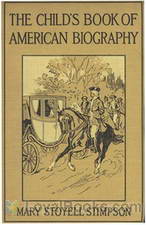 The Child's Book of American Biography
The Child's Book of American Biography
In every country there have been certain men and women whose busy lives have made the world better or wiser. The names of such are heard so often that every child should know a few facts about them. It is hoped the very short stories told here may make boys and girls eager to learn more about these famous people. (from the Forward of the text) | |
By: Matthew A. Henson (1866-1955) | |
|---|---|
 Negro Explorer at the North Pole
Negro Explorer at the North Pole
In this fascinating memoir, Matthew Henson describes the incredibly dangerous, exhausting, and bone-chilling trip to what was until then the never-before reached point on earth, the North Pole. "Robert Peary is remembered as the intrepid explorer who successfully reached the North Pole in 1909. Far less celebrated is his companion, Matthew Henson, a black man from Maryland. Henson's gripping memoir, first published in 1912, tells this unsung hero's story in his own words. Henson...was indispensable to the famous explorer's journey; he learned the language of the Eskimos, was an expert dog-sled driver and even built the sleds... | |
By: May Gillington Byron (-1936) | |
|---|---|
 Days with the Great Composers
Days with the Great Composers
These light entertainments, originally published anonymously, are an imagined day in the life of each composer (Beethoven, Mendelssohn, Schubert, Chopin, Wagner, Gounod, Mozart, Schumann, Tschaikovsky). This gives the author scope to describe each one's work and life, sketchily, of course, but interestingly. | |
 Day With Great Poets
Day With Great Poets
Who was John Milton? The author of Paradise Lost you say? Well, certainly, but he was also a man, going about his daily life like any of us in 17th century England, (except that he was a genius of course). Take time to read about a day in his life and learn more about him and his likes, dislikes, background and proclivities. Also, the same with Samuel Taylor Coleridge, Walt Witman, Lord Byron, Keats and Elizabeth Barrett Browning. Each of them a man or woman of their times, living each day like us, but seeing shades and hues of life that we can only experience through their exquisite poetry... | |
By: May Sinclair (1863-1946) | |
|---|---|
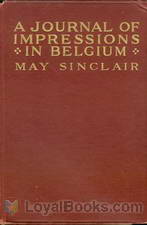 Journal of Impressions in Belgium
Journal of Impressions in Belgium
In 1914, at the age of 51, the novelist and poet May Sinclair volunteered to leave the comforts of England to go to the Western Front, joining the Munro Ambulance Corps ministering to wounded Belgian soldiers in Flanders. Her experiences in the Great War, brief and traumatizing as they were, permeated the prose and poetry she wrote after this time. Witness of great human pain and tragedy, Sinclair was in serious danger of her life on multiple occasions. This journal makes no attempt to be anything more than a journal: a lucid, simple, heart-breaking account of war at first hand. | |
By: Millicent Garrett Fawcett (1847-1929) | |
|---|---|
 Some Eminent Women of our Times
Some Eminent Women of our Times
Written by Millicent Garrett, a noted British feminist, suffragist and intellectual writer, this volume is comprised of short biographical sketches of 23 influential women from Jane Austen and Elizabeth Barrett Browning to Queen Victoria and Queen Louisa of Prussia. | |
By: Moncure D. Conway (1832-1907) | |
|---|---|
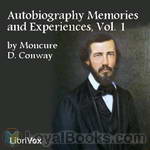 Autobiography Memories and Experiences, Volume 1
Autobiography Memories and Experiences, Volume 1
Moncure Daniel Conway was an American abolitionist, Unitarian, clergyman and author. This first volume of his autobiography covers roughly the years of his birth through the end of the US Civil War. | |
By: Moncure Daniel Conway (1832-1907) | |
|---|---|
 Autobiography Memories and Experiences, Volume 2
Autobiography Memories and Experiences, Volume 2
Moncure Daniel Conway was an American abolitionist, Unitarian, clergyman and author. This second volume of his autobiography covers the years from the US Civil War to roughly 1904. | |
By: Mrs. Cecil Hall | |
|---|---|
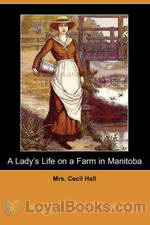 A Lady's Life on a Farm in Manitoba
A Lady's Life on a Farm in Manitoba
The nineteenth century was marked by intense colonization by countries like Britain, France, Portugal, Spain and the Netherlands. Initially, the pioneering efforts were made by men who battled unfamiliar terrain to create territories that they marked out as their own, while their wives, mothers, sisters and daughters kept the home and hearth in their native land. However, with travel becoming more common and family life assuming more importance, the women too began to travel to the four corners of the earth... | |
By: Mrs. Philip Snowden (1881-1951) | |
|---|---|
 Political Pilgrim in Europe
Political Pilgrim in Europe
Written in the aftermath of Word War I, Viscountess Snowden recounts her travels in post war Europe in, as she describes it, "an attempt to do what one person might do, or at least attempt, to restore good feeling between the nations and the normal course of life as quickly as possible." An outspoken pacifist, socialist, and feminist who nonetheless strongly denounced the Bolsheviks, Snowden was a controversial and polarizing figure. whose views and observations offer a unique perspective on Europe in the '20s. - Summary by Ciufi Galeazzi | |
By: Mrs. Robert Hoskins (1837-1916) | |
|---|---|
 Clara A. Swain, M.D.
Clara A. Swain, M.D.
This is a brief biography of Clara A. Swain, M.D. who is regarded as the "first Medical Missionary to the Women of the Orient." She graduated from the Woman's Medical College in Philadelphia and was sent out to India where she eventually came to be in the service of royalty. | |
By: N. E. Dionne (1848-1917) | |
|---|---|
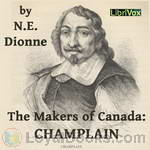 The Makers of Canada: Champlain
The Makers of Canada: Champlain
A biography of Samuel de Champlain, French explorer, founder of Quebec, and father of New France. ( | |
By: N. P. Dawson | |
|---|---|
 Good Soldier; A Selection Of Soldiers' Letters, 1914-1918
Good Soldier; A Selection Of Soldiers' Letters, 1914-1918
“Here are boys, all sorts of boys: French, English, Italian, American… These are soldiers’ letters written home. But reading, one finds that he does not think of them as letters at all, but as boys… but the spirit of these letters cannot be defeated. The dead will rise again.” Each letter is introduced by a paragraph or two about the writer. - Summary by Author's Introduction and David Wales | |
By: Nat Love (1854-1921) | |
|---|---|
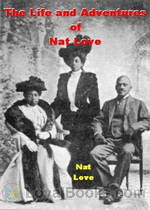 The Life and Adventures of Nat Love, Also Known As Deadwood Dick
The Life and Adventures of Nat Love, Also Known As Deadwood Dick
Nat Love was born a slave, emancipated into abject poverty, grew up riding the range as a cowboy and spent his maturity riding the rails as a Pullman Porter. For me, the most amazing thing about him is that despite the circumstances of his life, which included being owned like a farm animal solely because of the color of his skin and spending later decades living and working as an equal with white coworkers, he was an unrepentant racist! Convinced that the only good Indian was a dead one, and that... | |
By: Nellie Bly (1864-1922) | |
|---|---|
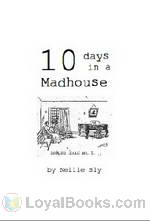 Ten Days in a Madhouse
Ten Days in a Madhouse
Long before Christiane Amanpour, Frances Fitzgerald and Martha Gellhorn blazed a trail in courageous investigative journalism, a pioneering and intrepid writer and journalist whose pen name was Nellie Bly opened up a whole new field in what had previously been a strictly male domain. Ten Days in a Madhouse was published as a series of articles in the New York World during 1887. Nellie Bly was given the assignment by her editor to have herself committed to an insane asylum in New York with a “view to writing a plain and unvarnished narrative of the treatment of patients therein and the methods of management... | |
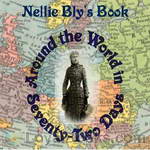 Around the World in Seventy-Two Days
Around the World in Seventy-Two Days
This is a true account by American woman journalist who, in 1889, set out to see whether she could beat the fictional journey in Jules Verne’s 1873 novel, Around the World in Eighty Days. Wearing one dress and carrying one handbag, Elizabeth Cochrane Seaman (pen name “Nellie Bly”), reported her travels back to avid readers in America. | |
By: Nicolas Notovitch (1858-?) | |
|---|---|
 The Unknown Life of Jesus Christ
The Unknown Life of Jesus Christ
The New Testament describes the life of Jesus, but nothing is said of his life between the ages of 14 and 29. Notovitch, like so many historians, tries to find evidence of what happened to Jesus during those years. He claims to have found the answer in an old document describing the life of Saint Issa. "The Unknown Life of Jesus Christ" is a copy of the manuscript along with Notovitch's reflections on his findings. It will take you on a journey to an unexpected land, linking people, cultures and religions you wouldn't dream of linking. | |
By: Noah Davis (b. 1804) | |
|---|---|
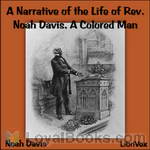 A Narrative of the Life of Rev. Noah Davis, A Colored Man
A Narrative of the Life of Rev. Noah Davis, A Colored Man
The object of the writer, in preparing this account of himself, is to RAISE SUFFICIENT MEANS TO FREE HIS LAST TWO CHILDREN FROM SLAVERY. Having already, within twelve years past, purchased himself, his wife, and five of his children, at a cost, altogether, of over four thousand dollars, he now earnestly desires a humane and Christian public to AID HIM IN THE SALE OF THIS BOOK, for the purpose of finishing the task in which he has so long and anxiously labored. God has blessed him in an extraordinary... | |
By: Norman F. Langford | |
|---|---|
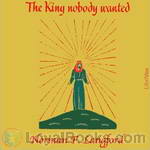 The King Nobody Wanted
The King Nobody Wanted
In a very real and interesting way, The King Nobody Wanted tells the story of Jesus. Where the actual words of the Bible are used, they are from the King James Version. But the greater part of the story is told in the words of every day. (Introduction by N. F. Langford) | |
By: Notker the Stammerer | |
|---|---|
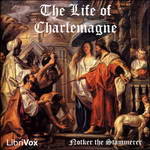 The Life of Charlemagne (Notker)
The Life of Charlemagne (Notker)
Notker’s work consists of anecdotes relating chiefly to the Emperor Charlemagne and his family. It was written for Charles the Fat, great-grandson of Charlemagne, who visited Saint Gall in 883. It has been scorned by traditional historians, who refer to the Monk as one who “took pleasure in amusing anecdotes and witty tales, but who was ill-informed about the true march of historical events”. However, several of the Monk’s tales, such as that of the nine rings of the Avar stronghold, have been used in modern biographies of Charlemagne. | |
By: Olaudah Equiano (1745-1797) | |
|---|---|
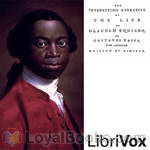 The Interesting Narrative of the Life of Olaudah Equiano, Or Gustavus Vassa, The African
The Interesting Narrative of the Life of Olaudah Equiano, Or Gustavus Vassa, The African
The Interesting Narrative of the Life of Olaudah Equiano, written in 1789, is the autobiography of Olaudah Equiano. It discusses his time spent in slavery, serving primarily on galleys, documents his attempts at becoming an independent man through his study of the Bible, and his eventual success in gaining his own freedom and in business thereafter. The book contains an interesting discussion of slavery in West Africa and illustrates how the experience differs from the dehumanising slavery of the Americas... | |
By: Olive Beaupre Miller (1883-1968) | |
|---|---|
 Latch Key of My Bookhouse
Latch Key of My Bookhouse
This is the final book in a six volume set of the "My Bookhouse" books. This final title in the series leaves off the format of the previous volumes and is geared towards the parent or teacher. The major part of the books deals with short biographies of the authors whose works appeared in the previous five volumes. Then follow several interesting sections, some of which include: the History of Mother Goose, The World's Great Epics, and How to Judge Stories for Children. For the several indexes included in the second half of the book, including a historical index, a geographical index and others, please see the online text linked below. | |
By: Olive Gilbert (?-?) & Sojourner Truth (1797-1883) | |
|---|---|
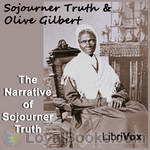 The Narrative of Sojourner Truth
The Narrative of Sojourner Truth
The Narrative of Sojourner Truth is the gripping autobiographical account of Sojourner Truth's life as a slave in pre-Civil War New York State, and her eventual escape to Freedom. Since Sojourner could neither read or write, she dictated her story to Olive Gilbert after they met at a Women’s Rights rally. The Narrative was first published in 1850, and was widely distributed by the Abolitionist Movement. It was one of the catalysts for the rise of anti-slavery public opinion in the years leading up to the Civil War... | |
By: Oliver Goldsmith (1730-1774) | |
|---|---|
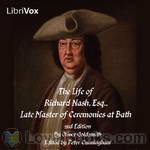 The Life of Richard Nash, Esq., Late Master of the Ceremonies at Bath
The Life of Richard Nash, Esq., Late Master of the Ceremonies at Bath
Beau Nash (1674–1762), born Richard Nash, was a celebrated dandy and leader of fashion in 18th-century Britain. He is best remembered as the Master of Ceremonies at the spa town of Bath. (Wikipedia)This, the best of Goldsmith's Biographies, was published the year after Nash's death. It was at once popular, and went through two editions in the same year in which it was published. To the second edition (it never reached a third), Goldsmith made many important additions. Yet strange to say none of these have been attended to by the editors of his Works... | |
By: Oliver Wendell Holmes, Sr. (1809-1894) | |
|---|---|
 My Hunt After 'The Captain'
My Hunt After 'The Captain'
Holmes describes his frantic search through Civil War torn landscapes for his wounded son, the future Supreme Court Justice. Originally published in The Atlantic Magazine, 1862. Holmes, Sr. (1809 -1894) was an American physician, poet, professor, lecturer, and author. He was regarded by his peers as one of the best writers of the 19th century. His most famous prose works are the "Breakfast Table" series, which began with The Autocrat of the Breakfast Table (1858). He is also recognized as an important medical reformer. | |
By: Orville J. Victor (1827-1910) | |
|---|---|
 Private and Public Life of Abraham Lincoln
Private and Public Life of Abraham Lincoln
Few men have lived in modern times whose life history is so suggestive as that of Abraham Lincoln. Not that he should have stepped from a log-cabin to the national capitol, though that fact, of itself, might challenge our liveliest interest; but that, out of the very discouraging circumstances which surrounded his years to manhood, he should have come forth with a well-stored mind, a large and humanitarian soul, and perceptions which led him unerringly forward to his high destiny — that is a result so remarkable as to render the story of his life one of the highest significance... | |
By: Oscar Wilde (1854-1900) | |
|---|---|
 Letters of Oscar Wilde, Volume 3 (1895-1897)
Letters of Oscar Wilde, Volume 3 (1895-1897)
This third collection of the correspondence of Oscar Wilde includes the letters Wilde wrote from prison. It begins with notes of thanks to the friends who stood by him after his arrest, and ends with discussions of his plans for after his release. De Profundis, the long letter Wilde wrote to his lover, Lord Alfred Douglas, is represented by the expurgated 1913 edition as well as suppressed portions that were later published elsewhere. The letters are sourced from auction catalogues, biographies, and other texts in the public domain... | |
By: Osmund Airy (1845-1928) | |
|---|---|
 English Restoration and Louis XIV: From the Peace of Westphalia to the Peace of Nimwegen
English Restoration and Louis XIV: From the Peace of Westphalia to the Peace of Nimwegen
In this trim volume the British historian, Osmund Airy writes of the period between 1648 and 1679 when Cardinal Mazarin, having concluded the masterly Peace of Westphalia for France, confronts the rebellions of the nobility known as the Fronde. By the time of his death in 1661, Mazarin has completed the work of Richelieu and made Louis XIV an absolute monarch, ready to extend his borders by conquest. But in Holland, the young Stadtholder, William III of Orange, resolutely opposes Louis's military... | |
 Charles II
Charles II
This engaging book is an inestimable resource for any student of the merry monarch, Charles II. "Odd's fish," he said "I am an ugly fellow!" Yet, as Airy writes, "his power of imagination, his intuitive perception of character, his faculty of statecraft, enabled him to gauge the strength or weakness of an opponent or the frailty of an adherent, and to slip by difficulties which it was inconvenient to meet." But alas, Charles's moral languor led to the dominance of French gold in English affairs, and to parliamentary factions and courtly intrigues, which culminated in the judicial murders of the Popish Plot. | |
By: Otto Jahn (1813-1869) | |
|---|---|
 Life of Mozart Volume 1
Life of Mozart Volume 1
An in depth look into the life of one of the greatest ever composers and musicians. Mozart was truly a gifted individual and this is an interesting look at both his family life and his musical career. | |
By: Owen Wister | |
|---|---|
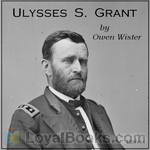 Ulysses S. Grant
Ulysses S. Grant
Ulysses S. Grant was the great hero (for the North) in the Civil War and the 18th President of the United States. This short biography is only 145 pages in a little pamphlet size. The author is famous for his stories of the Old West, but he also wrote a substantial body of nonfiction literature. | |
By: P.T. Barnum | |
|---|---|
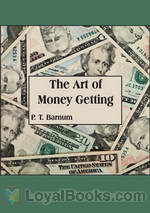 The Art of Money Getting
The Art of Money Getting
Phineas Taylor Barnum (July 5, 1810 – April 7, 1891) was an American showman, businessman, and entertainer, remembered for promoting celebrated hoaxes and for founding the circus that became the Ringling Bros. and Barnum & Bailey Circus.(br />His successes may have made him the first "show business" millionaire. Although Barnum was also an author, publisher, philanthropist, and for some time a politician, he said of himself, "I am a showman by profession...and all the gilding shall make nothing else of me," and his personal aims were "to put money in his own coffers". (Reference: Wikipedia.org) | |
By: Palladius | |
|---|---|
 Paradise, or Garden of the Holy Fathers (Book 1)
Paradise, or Garden of the Holy Fathers (Book 1)
The Desert Fathers were early Christian hermits, ascetics, and monks who mainly lived in the Scetes desert of Egypt. The most famous was St. Anthony the Great, who moved to the desert in 270 AD and became known as both the father and founder of desert monasticism. By the time Anthony died in AD 356, thousands of monks and nuns had been drawn to Anthony's example of living in the harsh conditions of the inner desert, praying the psalms, meditating on scripture, eating rarely, and working with their hands making baskets or mats. This work is a collection of stories from the lives of these early monks and nuns. - Summary by ancientchristian | |
 Paradise, or Garden of the Holy Fathers (Book 2)
Paradise, or Garden of the Holy Fathers (Book 2)
The Desert Fathers were early Christian hermits, ascetics, and monks who mainly lived in the Scetes desert of Egypt. The most famous was St. Anthony the Great, who moved to the desert in 270 AD and became known as both the father and founder of desert monasticism. By the time Anthony died in AD 356, thousands of monks and nuns had been drawn to Anthony's example of living in the harsh conditions of the inner desert, praying the psalms, meditating on scripture, eating rarely, and working with their hands making baskets or mats. This work is a collection of stories from the lives of these early monks and nuns. - Summary by ancientchristian | |
 Paradise, or Garden of the Holy Fathers (Book 3) (The Rule of Pachomius at Tabenna)
Paradise, or Garden of the Holy Fathers (Book 3) (The Rule of Pachomius at Tabenna)
The Desert Fathers were early Christian hermits, ascetics, and monks who mainly lived in the Scetes desert of Egypt. The most famous was St. Anthony the Great, who moved to the desert in 270 AD and became known as both the father and founder of desert monasticism. By the time Anthony died in AD 356, thousands of monks and nuns had been drawn to Anthony's example of living in the harsh conditions of the inner desert, praying the psalms, meditating on scripture, eating rarely, and working with their hands making baskets or mats. This work is a collection of stories from the lives of these early monks and nuns. - Summary by ancientchristian | |
 Paradise, or Garden of the Holy Fathers (Book 4) (The Histories of the Monks Who Lived in the Desert of Egypt, Which Were Compiled by Saint Hieronymus)
Paradise, or Garden of the Holy Fathers (Book 4) (The Histories of the Monks Who Lived in the Desert of Egypt, Which Were Compiled by Saint Hieronymus)
The Desert Fathers were early Christian hermits, ascetics, and monks who mainly lived in the Scetes desert of Egypt. The most famous was St. Anthony the Great, who moved to the desert in 270 AD and became known as both the father and founder of desert monasticism. By the time Anthony died in AD 356, thousands of monks and nuns had been drawn to Anthony's example of living in the harsh conditions of the inner desert, praying the psalms, meditating on scripture, eating rarely, and working with their hands making baskets or mats. This work is a collection of stories from the lives of these early monks and nuns. Summary by ancientchristian | |
By: Paul Leicester Ford (1865-1902) | |
|---|---|
 Many-Sided Franklin
Many-Sided Franklin
A fast-paced, somewhat racey look into the life, accomplishments and idiosyncrasies of Benjamin Franklin. Acclaimed biographer Paul L. Ford uses Franklin’s letters, papers and journals to step us through Franklin's many adventures, to reveal intimate details of his personal life - relations with siblings, wife, children, friends, business partners; his physique, health, illnesses, schooling, personal habits and goals; his opinions on education, philosophy, religion, friendship, industry; his library; his career as printer and publisher, writer and journalist, politician and diplomat, scientist, humorist, jack of all trades; and his relations at home and abroad with the “fairer sex“... | |
By: Pauline von Hugel (1858-1901) | |
|---|---|
 A Royal Son and Mother
A Royal Son and Mother
Demetrius Augustine Gallitzin (1770-1840) was an emigre Russian aristocrat and Catholic priest who is acclaimed as "The Apostle of the Alleghenies." He is the son of Prince Dimitri Alexeievich, a Russian ambassador to the Netherlands, and the German Countess Adelheid Amalie von Schmettau. Demetrius was raised Russian Orthodox, but at age seventeen he converted to Catholicism, the faith of his mother, following her miraculous recovery from a serious illness. Although the ambassador had planned a military career for his son and had sent him to America for an education, he was shocked to learn that his son had renounced his inheritance and had entered a seminary instead... | |
By: Pearl White (1889-1938) | |
|---|---|
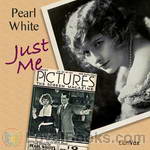 Just Me
Just Me
Perhaps the first memoir written by a film celebrity, Pearl White's Just Me gives a first-person account of the actress' rise to stardom. White guides us through her early childhood, her development as a performer, and finally to her breakout role in The Perils of Pauline--a role that made her the most popular "serial queen" of early cinema. Although romanticized and somewhat embellished, this book gives us a fascinating glimpse into the film industry's earliest years and the various myths of film stardom. | |
By: Percy Bysshe Shelley (1792-1822) | |
|---|---|
 History of a Six Weeks' Tour
History of a Six Weeks' Tour
Full titled History of a Six Weeks' Tour through a part of France, Switzerland, Germany, and Holland; with Letters Descriptive of a Sail Round the Lake of Geneva and of the Glaciers of Chamouni, this small journal was a travel narrative kept by the English Romantic authors Mary Shelley and Percy Bysshe Shelley. They describe two trips, both taken by Mary, Percy, and Mary's stepsister, Claire Clairmont: one across Europe in 1814, and one to Lake Geneva in 1816. Divided into three sections, the text consists of a journal, four letters, and Percy Shelley's poem "Mont Blanc". Apart from the poem, the text was primarily written and organized by Mary Shelley. - Summary by 1817 | |
By: Percy M. Turner | |
|---|---|
 Van Dyck
Van Dyck
A biography and critique of Van Dyck in The Masterpieces in Colour series. The Plates of the paintings are fully described and the artistic periods in his life's work are given as well as his place in history. | |
By: Peter Abelard (1079-1142) | |
|---|---|
 The Story of My Misfortunes
The Story of My Misfortunes
Autobiographies from remote historical periods can be especially fascinating. Modes of self-presentation vary greatly across the centuries, as of course does the very concept of Self. Peter Abelard, the medieval philosopher and composer, here gives a concise but vivid survey of his notoriously calamitous life. The work is couched in the form of a letter to an afflicted friend. Abelard’s abrasively competitive, often arrogant personality emerges at once in the brief Foreword, where he informs his correspondent: “(I)n comparing your sorrows with mine, you may discover that yours are in truth nought.. and so shall you come to bear them the more easily.” | |
By: Peter H. Ditchfield (1854-1930) | |
|---|---|
 Books Fatal to Their Authors
Books Fatal to Their Authors
This is a collection of stories of authors who have lost their fortunes and sometimes their lives after writing a book. The liberty of a person's conscience was unknown in the sixteenth and seventeenth centuries; Why should a man be drawn and quartered for writing what we know is the truth? What must it have been like to have lived in that era. At the time it was dangerous to say that the earth went around the sun and many other theories were treated in the same way. | |
By: Peter Kropotkin (1842-1921) | |
|---|---|
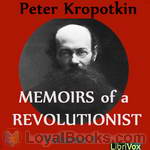 Memoirs of a Revolutionist, Vol. 1
Memoirs of a Revolutionist, Vol. 1
'Peter Kropotkin was a Russian anarcho-communist and scientist. This is his autobiography, and he writes not only about his own life, but also about 19th century Russian society and politics. He was born into the nobility and had a military education, but he gradually abandoned the values of his social class and became an anti-authoritarian socialist, opposed to both the rule of the Tsars and to the seizing of power by the authoritarian Bolsheviks. He was also interested in literature, biology, economics and geographical exploration. This first volume of his memoirs covers his childhood, his education, and the time he spent in Siberia. '. (Introduction by Elin, ) | |
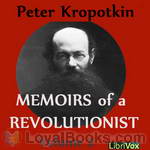 Memoirs of a Revolutionist, Vol. 2
Memoirs of a Revolutionist, Vol. 2
Peter Kropotkin was a Russian anarcho-communist and scientist. This is his autobiography, and he writes not only about his own life, but also about 19th century Russian society and politics. He was born into the nobility and had a military education, but he gradually abandoned the values of his social class and became an anti-authoritarian socialist, opposed to both the rule of the Tsars and to the seizing of power by the authoritarian Bolsheviks. He was also interested in literature, biology, economics and geographical exploration. This second and last volume of his memoirs covers his time in St Petersburg, his time in prison, and his journeys in Western Europe. ( | |
By: Philip Stanhope, 4th Earl of Chesterfield | |
|---|---|
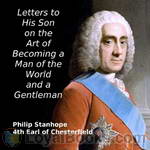 Letters to His Son on the Art of Becoming a Man of the World and a Gentleman
Letters to His Son on the Art of Becoming a Man of the World and a Gentleman
Philip Stanhope, Earl of Chesterfield, was at one time Ambassador to the Hague, negotiated the second Treaty of Vienna, was a founding governor of London’s Foundling Hospital, Lord-Lieutenant of Ireland, and Secretary of State. Having no legitimate children, his heir was his third cousin (another Philip) whom he adopted. Although known as a hard, calculating man, he is most well known for his letters to his natural son (i.e., illegitimate son) (also called Philip). When Philip died in 1768, the letters are addressed to his grandchildren (Philip’s two sons, Charles, and, yes, Philip!)... | |
By: Phineas Pett (1570-1647) | |
|---|---|
 Autobiography of Phineas Pett
Autobiography of Phineas Pett
Phineas Pett was a Master Shipbuilder from one of England's greatest shipbuilding families of the fifteenth and sixteenth centuries and kept a journal of his experiences and thoughts at this important and turbulent time in the industry. Although some pages were damaged or lost, the diary was transcribed by Samuel Pepys and preserved in the British Library. It was edited and published in the form of an autobiography by William Gordon Perrin of The Council of the Navy Records Society in 1918. - Summary by Lynne Thompson | |
By: Pope Gregory I (540-604) | |
|---|---|
 Life of St. Benedict
Life of St. Benedict
St. Benedict of Nursia was a sixth century monk and founder of monastic communities. His main achievement, the "Rule of St. Benedict," became one of the most influential monastic rules in the West. St. Benedict is sometimes called the founder of Western monasticism. One of the only ancient accounts of St. Benedict is found in the second volume of Pope Gregory I's four-book Dialogues, thought to have been written in 593. Gregory's account of Benedict's life provides a spiritual portrait of the gentle, disciplined abbot... | |
By: Princess Der Ling | |
|---|---|
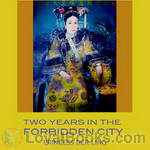 Two Years in the Forbidden City
Two Years in the Forbidden City
THE author of the following narrative has peculiar qualifications for her task. She is a daughter of Lord Yu Keng, a member of the Manchu White Banner Corps, and one of the most advanced and progressive Chinese officials of his generation. she became First Lady-in-Waiting to the Empress Dowager, and while serving at the Court in that capacity she received the impressions which provide the subject-matter of this book. Her opportunity to observe and estimate the characteristics of the remarkable woman who ruled China for so long was unique, and her narrative throws a new light on one of the most extraordinary personalities of modern times... | |
By: Publius Cornelius Tacitus | |
|---|---|
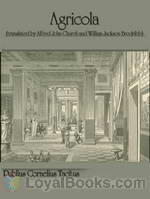 Agricola
Agricola
The Agricola (Latin: De vita et moribus Iulii Agricolae, lit. On the life and character of Julius Agricola) is a book by the Roman historian Tacitus, written c 98, which recounts the life of his father-in-law Gnaeus Julius Agricola, an eminent Roman general. It also covers, briefly, the geography and ethnography of ancient Britain. As in the Germania, Tacitus favorably contrasts the liberty of the native Britons to the corruption and tyranny of the Empire; the book also contains eloquent and vicious polemics against the rapacity and greed of Rome. This translation by Alfred John Church and William Jackson Brodribb, was first published in 1877. | |
By: Rabindranath Tagore (1861-1941) | |
|---|---|
 My Reminiscences
My Reminiscences
These Reminiscences were written and published by the Author in his fiftieth year, shortly before he started on a trip to Europe and America for his failing health in 1912. It was in the course of this trip that he wrote for the first time in the English language for publication. (from preface) | |
By: Rainer Maria Rilke (1875-1926) | |
|---|---|
 Auguste Rodin
Auguste Rodin
Rodin has pronounced Rilke's essay the supreme interpretation of his work. (From the translators’ Preface) Auguste Rodin, 1840-1917, was a French sculptor. Although Rodin is generally considered the progenitor of modern sculpture, he did not set out to rebel against the past. He was schooled traditionally, took a craftsman-like approach to his work, and desired academic recognition, although he was never accepted into Paris's foremost school of art. Sculpturally, Rodin possessed a unique ability to model a complex, turbulent, deeply pocketed surface in clay... | |
By: Ralph Keeler (1840-1873) | |
|---|---|
 Vagabond Adventures
Vagabond Adventures
Ralph Keeler failed as a novelist, but this autobiography reflects a life well-lived with humor and adventure. Keeler was in the same literary circle as satirist Bret Harte, novelist Charles Warren Stoddard, editor Thomas Bailey Aldrich, and essayist William Dean Howells. He so impressed Mark Twain that Twain wrote an essay about him called "Ralph Keeler". In 1873, on his way to Cuba, he reportedly was thrown overboard by a Spanish loyalist who objected to his backing of the revolutionary, anti-Spanish movement. - Summary by John Greenman | |
By: Ralph Waldo Emerson (1803-1882) | |
|---|---|
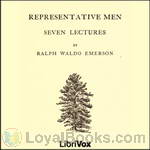 Representative Men
Representative Men
A series of biographical lectures originally published in 1850. Each chapter is a philosophical treatment of the life of an intellectual. The six representatives are Plato, Swedenborg, Shakespeare, Montaigne, Napolean and Goethe. (Introduction by S. Kovalchik) | |